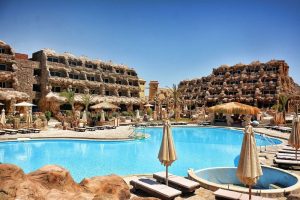When it comes to photography, there’s a common belief that more expensive gear will automatically result in better photos. While better equipment can make a difference in certain situations, like when photographing fast-moving subjects or in low light, it’s ultimately your skills that matter most. A high-end camera in the hands of someone who doesn’t know how to use it may produce worse results than a skilled photographer using a simple smartphone.
The most important factors for taking great photos are knowing how to compose a shot and how to use your camera effectively. Gear comes second to that. However, for specific scenarios—such as capturing fast action or shooting in dim lighting—higher-end equipment can help. This explains why sports and wedding photographers often carry around expensive gear.
But when it comes to regular travel photography, your gear doesn’t have to be the top priority. The key is choosing the right equipment for your budget, your skill level, and your personal needs.
How Much Money Do You Want to Spend?
Start by setting a budget. Don’t waste time looking at equipment that’s out of your price range. Be sure to factor in additional costs for lenses, memory cards, batteries, and other accessories. Generally, the sweet spot for a solid camera setup is between $500 and $1,000. Here’s a breakdown of price ranges for different setups:
- Budget: $150–300
- Value: $300–500
- Mid-range: $500–1,000
- High-end: $1,000+
How Much Gear Are You Willing to Carry?
Weight is a big factor when choosing your gear. Be honest with yourself about how much you’re willing to carry around. I’ve met people who leave their heavy DSLR at the hotel because it’s just too bulky to bring along for a day of sightseeing.
If you don’t want to lug around a heavy camera, a smartphone or a lightweight point-and-shoot might be the best option for you. For comparison: a smartphone weighs around 6 oz, a point-and-shoot is about 8 oz, a mirrorless system with a lens weighs roughly 16 oz, and a full DSLR can weigh 30 oz or more.
Remember, the heavier the gear, the better the quality, especially in terms of optics. But unless you plan to print your photos in large formats or sell them professionally, you probably won’t notice much difference in image quality with lighter gear.
It’s also important to be honest about your commitment to learning photography. If you don’t want to invest time in learning how to use a complex camera, then don’t buy a high-end model. More expensive gear doesn’t automatically produce better photos, especially if you’re relying on auto mode.
10 Best Cameras for Travel
Camera types vary mainly by sensor size, with larger sensors typically performing better in low light but being bulkier and more expensive. Here’s a list of cameras arranged by sensor size, from smaller to larger:
- iPhone 12: A solid option for iPhone users, praised for its photography capabilities. ($999)
- Sony RX100 VII: A premium point-and-shoot with a large sensor, offering better image quality than most others. ($1,298)
- Canon Powershot Elph 190 IS: A budget-friendly option, perfect for basic travel photos. ($159)
- Canon Powershot G9X Mark II: A step up in quality, with great battery life and Wi-Fi. ($429)
- GoPro HERO 9 Black: Ideal for action shots and adventure photography. ($349)
- Nikon Coolpix B700: A superzoom camera with a 60x optical zoom, great for a variety of shooting scenarios. ($799)
- Lumix GX9: A compact mirrorless camera with excellent features for both photo and video. ($797)
- Sony Alpha 6300: A great entry-level mirrorless camera with high performance. ($998)
- Fujifilm X-T4: A high-end mirrorless camera with excellent autofocus and image quality. ($1,699)
- Canon EOS 6D Mark II: A lightweight DSLR with a full-frame sensor, great for low light. ($1,399)
Getting the Best Travel Lens
If you’re buying a mirrorless or DSLR system, you’ll need to invest in lenses too. In fact, it’s often worth spending as much on your lens as on the camera body. A good lens is key to getting the most out of your gear.
For travel, I recommend two lenses:
- A 50mm prime lens: Great for portraits and food photography, with a wide aperture that lets in more light.
- A versatile zoom lens: Something like a 24-105mm lens is perfect for capturing everything from landscapes to close-ups.
The Best Travel Photography Accessories
Don’t forget to budget for accessories. Some essentials include:
- Spare battery: A second battery is a must if you’ll be shooting a lot. Expect to pay around $30.
- External hard drive: For storing your photos, especially if you’re traveling without regular access to a computer. A 2TB drive will run about $79.
- Filters: Protect your lens with a UV filter, and a polarizing filter can help improve your shots. Filters range from $10 to $100, depending on size.
- Memory cards: Always have a spare or two, especially if you shoot a lot. A 64GB card costs around $15–30.
- Tripod: Useful for long exposure shots, a compact tripod is perfect for travel. Expect to pay about $100 for a good model.
Final Thoughts
Remember, the best photography tool is you, not your camera. I’ve traveled the world with an old 10-megapixel Canon Rebel SLR and captured award-winning photos. It’s much more important to invest time in learning how to take great photos than to buy expensive gear.
Do your research, think about your travel style, and choose gear that fits your needs, budget, and skill level. Happy shooting!







